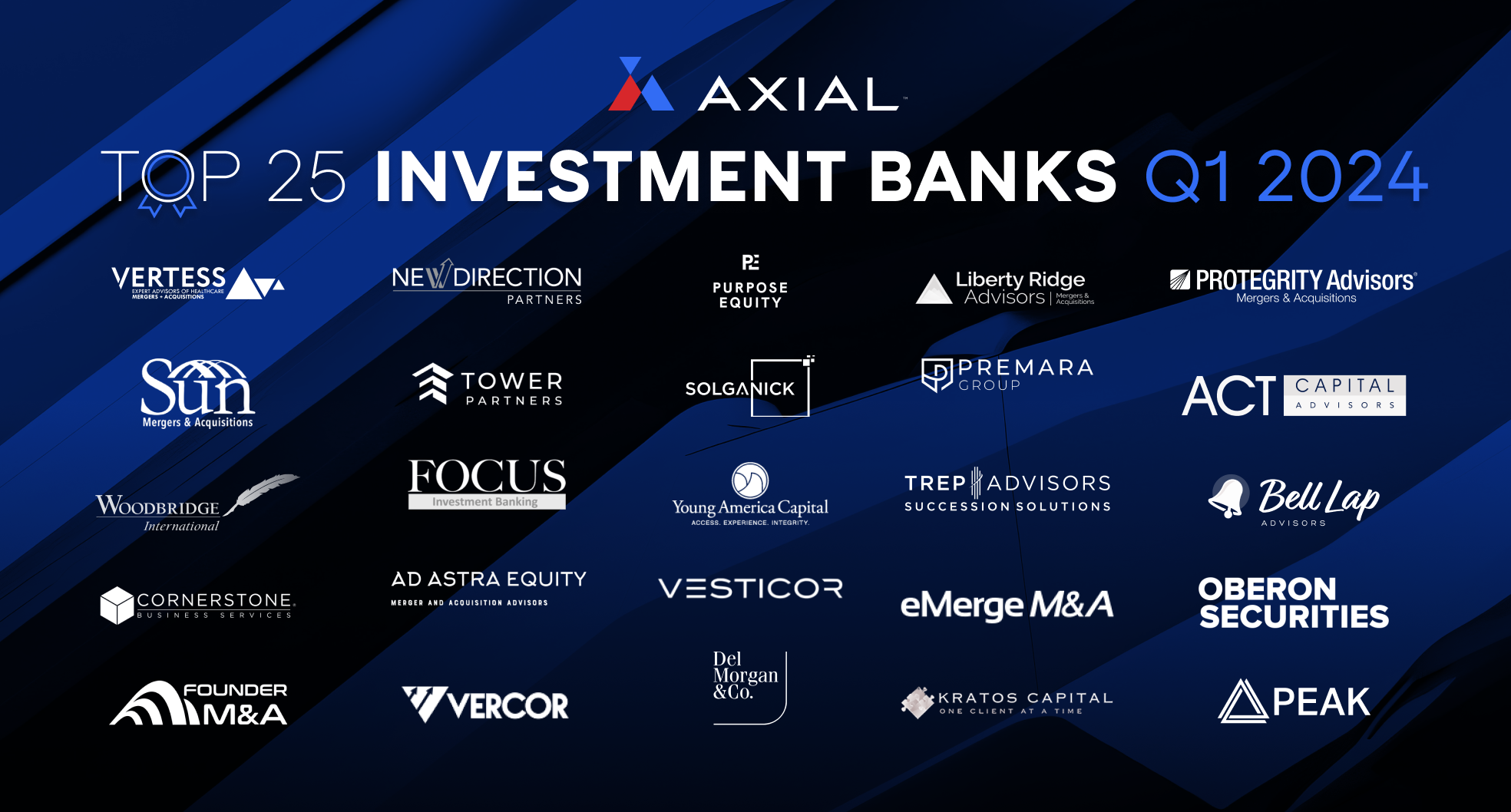
Top 25 Lower Middle Market Investment Banks | Q1 2024
Axial is excited to release our Q1 2024 Lower Middle Market Investment Banking League Tables. To assemble this list, we…
Tags
Private equity professionals empathize with the coaching role that sell-side brokers perform on behalf of their entrepreneurial clients. Many opportunities for miscues loom large when guiding a client through scenarios for monetizing a portion of their closely held securities and/or partnering with an investor to steward the business through its next growth phase. By necessity, the odyssey entails framing an entrepreneur’s unique value proposition to its market segment, as well as presenting a compelling argument for the potential of satisfying more customers by tapping into the resources of the private equity sponsor. This article is intended to provide ideas for consideration to sell-side brokers for communicating how the sponsor community understands a business model’s value proposition.
Customers generally buy two things: a solution to a known problem and a solution to an unknown problem. Both types of transactions infer value from the customers’ perspective. Such value is defined as perceived worth in excess of paid price. The extent to which customers prefer one vendor’s solution over another’s is attributable to several variables, any combination of which may be differentiable. However, the ability to communicate and substantiate differentiation to a third party (the investor) is essential.
Solution selling in response to a known problem may be the gateway to solution selling for an unknown problem. The reason is earned credibility. Solution selling for an unknown problem is more challenging and requires better execution competencies, but may create new markets and rich margins. Before discounting the latter is irrelevant, we must explain why customers embrace disruptive innovation such as 3D printers, match-making services, and Apple Watches?
Let’s start with solving known problems. From a middle market perspective, these may fall into two general categories of opportunity. One category deals with highly established markets dominated by large providers whose vulnerabilities may be rooted in their own success. These providers may have gotten complacent. Quality may have slipped and/or their prices may have risen without substantiating incremental value. A new market entrant may exploit either or both vulnerabilities.
The other general category for solving known problems deals with establishing markets for which no clear providers dominate. Essentially the norms have not developed. The entrepreneurial challenge is figuring out the best way to defragment the market with scale—and before any other provider does so.
In both examples, solving known problems benefits by “voice of the customer,” the objective of which is isolating and prioritizing purchasing decision drivers. Such input may be derived Socratically via customer points of contact. Indeed, some businesses wisely train their customer-facing functions to ask, “How may I help you?”, that is to say, “What known problem may I help you solve?” However, the tenor must be sincere and the recipient must know what to do with the data point upon its receipt. While this may be effective, the provider should be aware of inherent bias in this process. First, the customer-facing employees may be incented to skew solutions toward a product in hand. This has a deleterious corollary: eschewing signals for new products and services. Second, the customer may be reluctant to provide critical feedback to the supplier which traces to the aversion to damaging an interpersonal relationship. To mitigate such bias, vendors may consider utilizing objective intermediaries. For example, “secret shoppers” in business-to-consumer commerce are a viable alternative because they have no emotional attachment to the transaction.
Make no mistake, companies may do well—at least in the short run—by solving known customer problems. However, this does not address the game-changing nature of solving unknown problems. Another way to contemplate unknown problems is unrecognized (by customers) problems. The question to answer is “What problems may happen—or worse, are likely to happen?” or “What do the super-trends of the operating environment suggest might be a problem to preemptively solve?” Unknown problems take advantage of creativity translated into marketable innovation.
What would the state of California do right now if a turnkey solution were available to bypass its prevailing fresh water shortage problem? The Israelis, by example, in a country that is about three-fifths desert, have leaned on their desalination technology for decades. California has the third longest saltwater coastline of any state in the union: 864 miles. California may be receptive to desalination, but the state is essentially broke. Therefore, part of an innovative solution might regard financing such a project. For example, what if a provider of a desalination solution could engineer a recurring revenue stream—something tantamount to a commission—pegged to volume of supplied fresh water? Pioneers of solutions position themselves to exploit evolutionary tipping points in the market. True to form, that is essentially what Posiedon Water is doing right now in southern California, albeit years behind the desalination adoption in the Middle East.
Solving unknown problems may take advantage of the mounds of data businesses may be perched atop without recognizing its inherent value. Before diving into analysis, however, time should be spent on framing the problem to be solved. This process is sometimes described as “framing the critical thinking question to be answered.” The need for bias mitigation in this unknown problem category is analogous to the comments above for known problems. Some businesses attack this challenge using luminaries, thought leaders, and/or subject matter experts.
Consider this example for solving unknown customer problems. AxelaCare is a former Excellere Partners portfolio company (and present Harvest Partners portfolio company) specializing in IVIg home infusion therapy for treatment of autoimmune diseases. One of their C-level hires was a business development leader. In this instance, his role was a fresh perspective akin to the thought leader point above. This professional noticed material variation in treatment protocols and foresaw the benefits of providing physicians a secure portal, enabling comparison of patient results against blind prescriptive benchmarks.
AxelaCare’s innovation is congruent with a super-trend in American healthcare: outcomes-based medicine. The result for the patients was more effective therapies. The result for AxelaCare was meteoric growth and unchallenged leadership in their market. Traditional voice of the customer did not reveal this opportunity. Appropriately framing a critical thinking question did. Resolution provided gratifying economic rewards—and dominant market share.
The take-away for entrepreneurs in these problem solving points is promising, but requires execution discipline. Enterprise value may be nurtured by solving known and unknown customer problems, although solutions for unknown problems is potentially more lucrative. Accordingly, all businesses should allocate at least a portion of their intellectual bandwidth to the unknown problem spectrum. This requires both effective value-stream processes and an enabling culture. However, the latter requires the better leadership skills—a topic for another installment.
The ability of an entrepreneurial leader to communicate his or her vision for solving known and unknown problems is of great interest to the investor community. Sell-side brokers enjoy unique positioning to coach their clients through this necessity. Success in this endeavor provides a gratifying outcome for all three stakeholders in this scenario: the entrepreneurial client, the broker, and equity sponsor.
